This is the final installment of a three part discussion of Steven Spielberg’s masterpiece JAWS from a screenwriter’s perspective. In particular we have zeroed in on how the screenplay develops the three main characters and, specifically, their internal and external conflicts/motivations. You can read Parts One and Two Here and Here.
Here in Part Three we will focus on the third character in JAWS’ iconic movie star triptych, Quint (played by Robert Shaw), a local fisherman hired by Brody to help kill the shark as a sort of last resort, after every other solution has failed and the shark is essentially crusing up-and down the beach killing bathers and boaters at will.
Recall that in Part One, we briefly discussed Quint’s various character motivations. His external conflict is that he wants to kill the shark, claim the $10,000 bounty and prove that he is the best fisherman/boat captain on the island. His internal conflict is overcoming the horror of surviving the sinking of the USS Indianapolis and the shark attacks that were visited upon him and his shipmates while they waited for rescue.
We first meet Quint at a town hall meeting hosted by the local town council members and the Mayor. This is right after the shark has struck again, this time killing little Alex Kitner and his yellow raft. All the townspeople are freaked out and worried that if the news gets out, no tourists will come to swim on the beaches of Amity Island, and their summer-dependent businesses will collapse. Once Chief Brody announces that yes, he is going to close the beaches, pandemonium breaks out among the townfolk, and whatever useful discussion there might have been is lost in a ccaophony of yelling voices.
Until… the yelling is abruptly cut off by the awful sound of fingernails scraping on a blackboard. People wince, stop talking, and turn to see who or what is making that terrible sound.
This is our introduction to Quint.
On the blackboard, he has created an arresting drawing of a huge shark with an entire boy in its jaws. This is his backdrop as the camera begins to slowly move in on Quint as he lays out in an absolutely riveting monologue why this shark is a particularly “bad fish”, one they must deal with quickly, and why he is worth being paid $10,000 to do just that. Quint’s speech, both a threat and a promise, hangs in the air for a long moment until, finally, a stunned Mayor Vaughn promises Quint that they will take his proposal under advisement.
So… from a screenwriting perspective, what did we learn in this scene? First, it clearly establishes Quint’s external motivation – to catch and kill the shark for $10,000. But we also learned that nobody interrupts Quint once he starts speaking, which means he is either highly respected in town or people think he’s too crazy to interrupt… the truth is that it’s probably a little bit of both. Quint is dressed like a local fisherman and looks to be in his mid 50’s, but seems to carry much more mileage on him than just his years would suggest. You also get the sense that he means business because he names his price to kill the shark in a way that suggests it is non-negotiable and makes it clear he doesn’t want any help nor any volunteers.
Does that come from supreme confidence in his skills, or is it more likely that he’s simply nuts? The only way to find out is to keep watching, and here the writing (not to mention Shaw’s performance) guarantees that we will do exactly that.
The second time we see Quint, it is a brief shot of him driving his ship through the harbor as literal boatloads of local fishermen head out into the ocean looking to kill the shark and collect the $3,000 bounty. He gives a derisive snort and a laugh as he looks at the chaotic scene on the dock, in the harbor and on the sea. On the pier, one group of fiasherman have managed to kill a large tiger shark and are being celebrated by Brody and the Mayor for having “saved” Amity’s summer. But Quint can tell, even from his vantage point, that the shark on the dock is not THE shark. He knows this from cold experience gained over 30 years of fishing these waters. This estimation by feel is very different from Hooper’s scientific approach in which the shark expert first measures the bite radius of the dead shark and compares it to the bite marks on the remains of the girl from the cold open.
Even though Quint and Hooper have not yet met, we can already see how their radically different methodologies will set them at odds.
Now, let’s revisit the scene where Quint first meets Hooper in his own fisherman’s shack… this time from Quint’s perspective so that we can highlight a common and highly effective character-based storytelling technique. In Oliver Stone’s PLATOON, Charlie Sheen’s character “Chris” describes himself as the son of two fathers… Sgt. Elias, the compassionate leader who cares deeply about his men and Sgt. Barnes, the violent, dangerous animal unleashed by the horrors of combat in Vietnam. And indeed, for every lone wolf hero like John McClane, Richard Kimble or John Matrix, Hollywood has given us just as many complex heroes “born” of two “fathers.”
In STAR TREK, Captain Kirk exists on an emotional spectrum, set squarely between Spock’s pure logic and reason on one side and the highly emotional Dr. “Bones” McCoy on the other. STAR WARS puts Luke Skywalker between the courageous blue blood Princess Leia who is well-accustomed to the spotlight and the cynical mercenary Han Solo, a man who prefers to operate in the shadows. In A FEW GOOD MEN, Tom Cruise’s Daniel Kaffee is flanked on one side by Commander Galloway, the tactician obsessed with rules and procedure, and on the other by the soulful Lietuenant Weinberg, a man more concerned with what is right than what is legal.
JAWS too, takes great advantage of this classic storytelling technique, placing its own hero Chief Brody at the center of a similar character triptych that puts him between blue collar Quint who operates on instinct and experience and white collar Ivy League Hooper who is driven by technique, education and training.
Quint’s workman-like fisherman’s shack showcases his shark hunting skills, complete with shark jaws stripped of flesh and grinning malevolently from their perches on the walls, with more jaws boiling away in a huge steaming barrel. He’s a man who works with his hands and his guts, and who makes his own alcohol for those with the consitution necessary to drink it without going blind. And he doesn’t think much of those who haven’t spent their lives working for a living.
Quint communicates this attitude to Hooper when he tells him “you’ve got city hands, Mr. Hooper… been counting money all your life.” Underneath all that bluster, though, is insecurity. We can very easily make the case that Quint, much like Hooper, has spent his entire life stuggling to be taken seriously. There is something in his past that drives him, and Quint compensates by projecting the image of a hard self-made man… a stark contrast to Hooper who comes from money and education and who struggles with his self-image for different, perhaps even opposite, reasons.
This blue collar vs. white collar dynamic doesn’t evaporate once they are both on the boat… rather it gets more intense in the close quarters of The Orca.
One critical run-in comes as Quint prepares to shoot the shark with a harpoon gun. There is a chance he can kill the shark with a perfectly placed shot, but as a fall-back position, Quint wants to attach the shark to a heavy floating barrel, one which the shark should be unable to pull beneath the water. Theoretically, that empty barrel will force the shark to the surface and make him easier to find and kill. But Hooper costs Quint his one shot at killing the shark by taking time to find and attach a tracking device before finally tying on the barrel and giving Quint the signal to shoot… long after the kill shot opportunity has passed.
It’s a great sequence full of tension and stakes, and it highlights the ongoing battle aboard The Orca between scientifc inquiry (Hooper) and practical blue collar fishing (Quint). It’s also probably true that at this point Quint understands the unique danger this shark poses in a way that Hooper does not, and maybe even cannot… at least not yet.
Later, as the sun goes down, and Chief Brody suggests quitting for the day, Quint replies that they’ve got one barrel in him, so they will stay out here until they find him again. Quint is no quitter. This leads directly, and thematically, to the next scene where we find out a whole lot more about Quint than we ever suspected. Yes, I’m talking about the USS Indianapolis scene.
The USS Indianapolis scene is wonderfully constructed because it starts out as just a couple of guys drinking and blowing off some steam after a long and dangerous day of sharking. Quint and Hooper compare scars and you can feel the ice beginning to thaw a little between the two men. Maybe this adventure to catch and kill the shark will work out, after all?
Then Chief Brody motions to Quint and asks about one particular scar on his arm… one that Quint has very pointedly avoided mentioning. Quint replies that it was a tattoo he had removed. Hooper cracks a joke about it… “lemme guess… mother?”… and Hooper and Brody laugh it up, but Quint, suddenly going from buzzed to stone cold sober says “Mr. Hooper, that’s the USS Indianapolis.” And everyone immediately stops laughing.
To get the full effect of Quint’s harrowing tale, you need to watch the scene. It’s not only brilliantly written, the sequence meticulously crafted by Spileberg, it’s also a tour de force performance from Robert Shaw. But what does this scene do for Quint, the character? It establishes his inner conflict and tells us in very specific terms why he absolutely hates sharks. This is critically important because without this motivation, Quint’s actions would not appear rational… they would make him seem crazy without any context or explanation. Why not radio in and get a bigger boat? Why not go back to the harbor for the night and come back out again in the morning? Why grind the engine so hard that it literally blows up in the hold, leaving them stranded? Because Quint’s obsession with sharks prevents him from thinking things through rationally.
Quint also narrates this tale as if he were just an observer and not a participant. Sure, Quint could have broken down in tears as he recounted the story and remembered his fallen shipmates, but he doesn’t because that would have been awful and, frankly, not in line with his character as written. The fact that he expresses no emotion makes the tale even more riveting. His maddening stocisim is summed up perfectly as he finishes the story, gives us a dark little grin and delivers the punchline… “anyway, we delivered the bomb.”
In a sense, the story makes Chief Brody, and especially Hooper, respect Quint in a way neither man had before. But in another, it terrifies them because they suddenly realize that they are trapped on a boat with their own version of Captain Ahab… and everyone remembers what happened to the crew of The Pequod.
Much like Captain Ahab, Quint ultimately meets his demise at the hand of the very thing he’s come to hunt and kill – the shark. After the shark thrashes Hooper’s metal cage, he comes back and leaps up onto the stern of the boat. The shark chews at everything in sight as Quint slides helplessly towards its waiting jaws. When the shark bites down, Quint lets loose that terrible high-pitched scream, reminiscent of his shipmates’ screams… the ones that must have filled his ears in 1945 and his nightmares ever since. Ultimately, Quint’s inner journey, the one that was set in motion by the shark attacks in the Pacific ocean all those years ago, comes full circle and ends with another shark attack… this one fatal.
While JAWS has great action and set pieces, brilliant direction and one of the all-time great John Williams scores, the fact that it has three characters who have both internal and external motivations which are fully realized, helps elevates it above other movies of its time and type and into the status of an American film classic. Such is the power of great screenwriting.
Now, if you’ll excuse me, I need to go re-watch the USS Indianapolis scene one more time . . .
Now is a great time to pre-order Michael Walsh’s collection of essays “Against The Corporate Media” featuring 42 essays by Conservative entertainment industry professionals (including Kurt Schlichter, Andrew Klavan, Glenn “The Instapundit” Reynolds, and me… George MF Washington) about how you can fight back against a media culture which dislikes you as much as you dislike it.

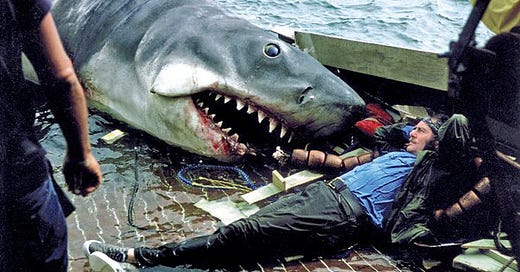



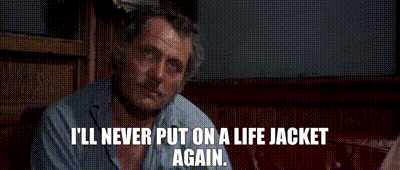


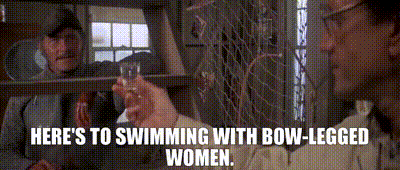

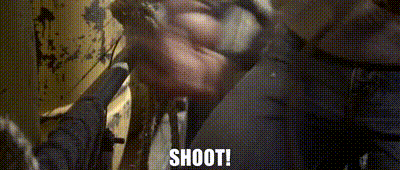
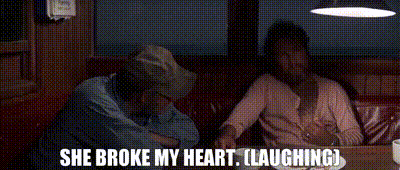
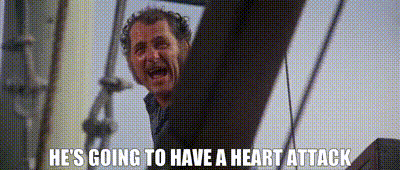
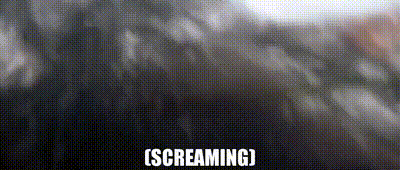

A fitting finale by Ben MF Franklin to the trilogy of character studies from one of my favorite movies, Jaws. Quint is the “cool” character we loved who became more unhinged as the third-act wore on. He went from Clint Eastwood to Captain Ahab. Smashing the radio so Chief Brody couldn’t call for help was jarring. Quint was a complicated fellow. He even warmed up to Hooper.
I was always a little disappointed that he cried out so when bitten by the shark, even as he fought to the last with the machete. But Ben MFF made an excellent point about the screams Quint related during the Indianapolis soliloquy. I never made that connection. Quint was never unmanned. So, thanks, Ben.
As much as we love MFW, please come back!